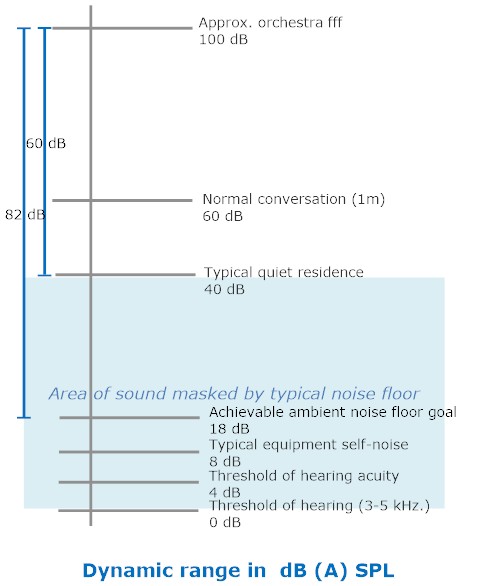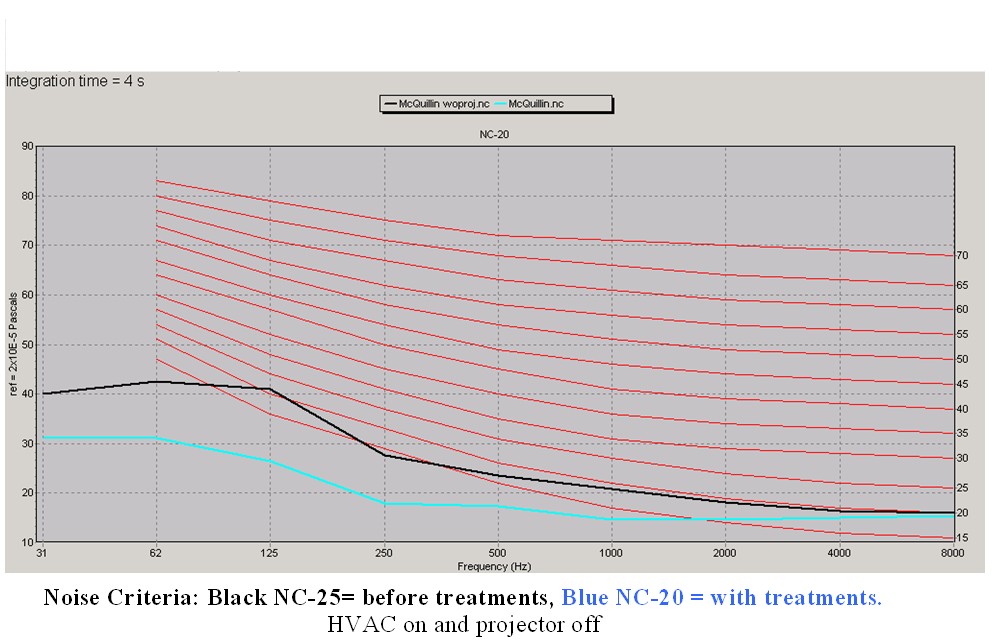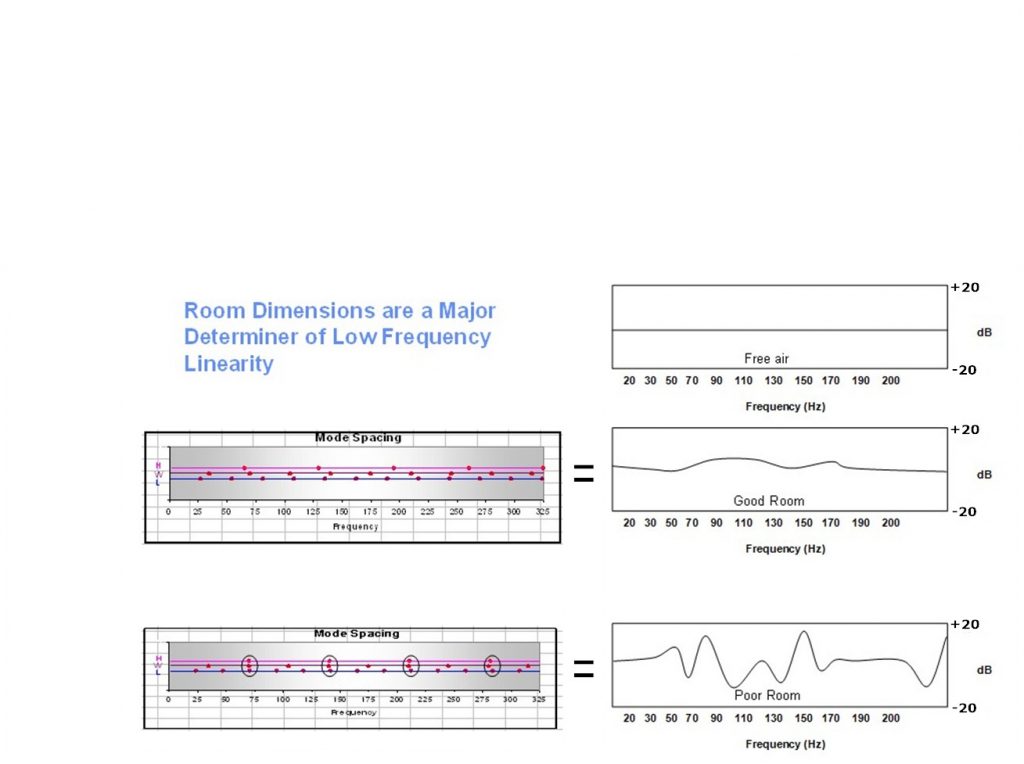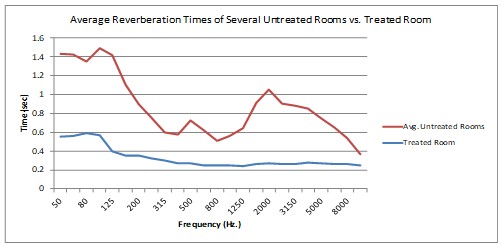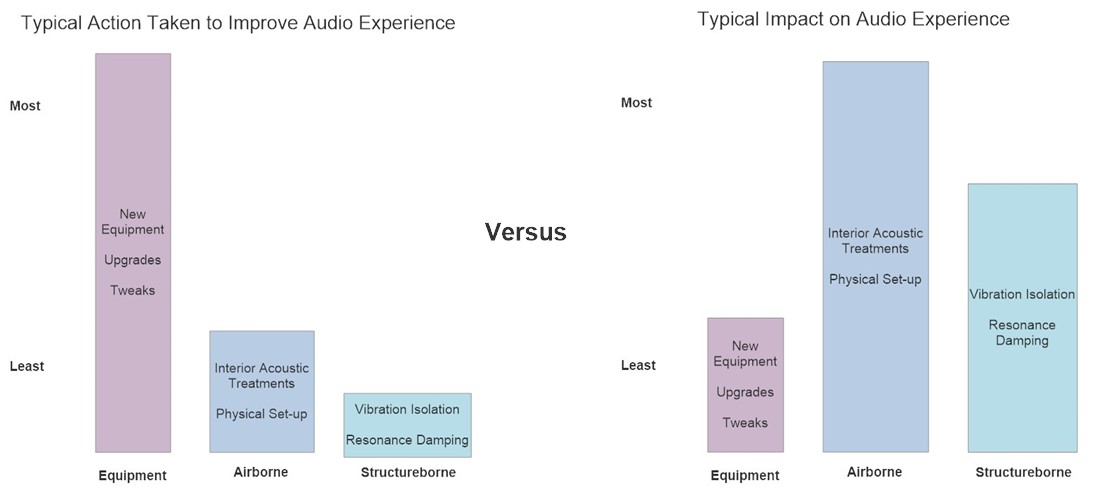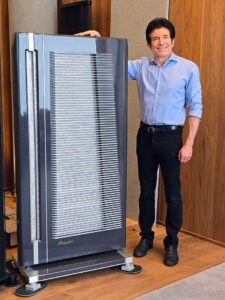Norman Varney of AV RoomService Ltd. has joined Positive Feedback as a Senior Technical Editor as of Issue 113. His expertise in his field of audio acoustics and experience in the field makes him a helpful voice in our creative community for the audio arts. As has been our wont from the beginning of PF, we do welcome contributions from qualified voices in the high-end audio industry, provided that they don't use the opportunity to market their own products/attack competitors and others...which we simply don't allow here.
Most audiophiles own some pretty good and capable playback equipment, however, they never hear the full potential of their investment because their acoustical environment is out of control. Sound waves are bouncing around the room chaotically, the structure is buzzing, rattling, and resonating, and there are noises heard that are unassociated with the original recording; like HVAC, outside traffic, etc. Some of these vibrations are even causing the equipment to malfunction.
In this article, we'll pick up from the last and introduce some of the numbers associated with acoustics and how they relate to critical listening. While we do, relate these typical room response measurements to equipment spec sheets. It may help you put things into better perspective.
Most audiophiles completely miss the boat by thinking that it's all about the equipment, when in reality, it's more about the acoustics. The acoustic environment controls the performance potential of the equipment and the ultimate experience had by the listener. Acoustics will always be the dominant regulator, regardless of the quality of the signal generated by the loudspeaker. Every room has unique reverberation times, room modes, resonances, noises, etc. This is not what the audiophile wants. No, the audiophile is after quality, neutrality and the greatest experience he can afford. He or she wants what was intended by the artists and nothing but. As I have said before; great equipment cannot sound great in a poor environment, but decent equipment can sound good in a good environment. Great equipment will sound exceptional in a great environment. Both the musical artists and the equipment manufacturers would much prefer the consumer to have a predictable, repeatable, and good quality acoustic environment. This means implementing quality control on the part of the consumer, just as there is QC at each step from the artists and the manufacturers.
In addition, the environment has so much influence on what you hear that acoustic anomalies can fool you into thinking that your gear is at fault. I would say that this occurs more than 90% of the time. Especially reverberation times, room modes, and structural resonances can cause you to think the system sounds bright, or boomy, or some other emphasis or de-emphasis of some kind that is being driven by the room, not necessarily by the equipment. Most audiophiles build systems around the unique sonic attributes of their rooms. This is the wrong approach, and will likely never achieve audio nirvana. You have to paint with a clean canvas. Otherwise you can't identify a dirty brush.
Before you can discuss sound quality characteristics, you have to get the noise floor under control. Most audiophiles suffer from an elevated noise floor that limits the dynamic range, causes distractions, and masks low-level detail.
Dynamic range and low-level resolution are fundamental aspects of sound quality to most audiophiles. For me, micro and macro dynamics are very important, as they are key elements of musical expression. This is where much of the communication and connection is lost to the poor, typical noise floor. An average professional recording studio will have a noise floor of about 18 dBA SPL. In other words, it's typically attainable without being crazy expensive. Would it not be wise to try to achieve the same dynamic range as the recording studio, rather than losing around 20 dB forever to noise and distraction? Remember that noise control is a two-way street; sometimes audiophiles need to control the sound that leaves their space from annoying those in adjacent spaces. When you address noise control, you automatically address the sound traveling in both directions. Noise control is often the most difficult aspect of acoustics to address. It can mean addressing anything and everything including HVAC, plumbing, structural vibrations and resonances, etc. It usually involves structural / mechanical isolation, damping, and may also involve airborne sound wave blocking and/or absorption. Electrical noise can also add to the ambient noise floor. This can occur externally, for example, from transformers, or internally, for example, from a poor grounding system, etc. Often you may not even notice the background noise until it suddenly stops. A common example of this is an electrical hum, or the HVAC, where suddenly there is relief from something that was only subconsciously bothering you.
When evaluating ambient noise problems, a common means of measuring uses noise criteria (NC) curves as reference points. This incorporates two factors of influence on how people respond or perceive noise: the spectrum level and shape, as seen in the measurement below depicting before and after treatments of an existing dedicated listening room. What was a good room is now superb, as can be seen by the blue trace being mostly below the red reference curves.
Room modes will dictate bass response. They can easily and commonly vary by 30dB. They are controlled by the room dimensions, and the construction materials and methods of the room. The dimensions call out the constructive and destructive frequencies, the building materials, and construction will control how well contained the energy stays in the room, and therefore, how long it lingers, and how well it transfers to the rest of the building. In addition, speaker and listener locations will dictate what frequencies are amplified or attenuated. Very few interior (surface mounted) acoustic treatments can address low frequencies below about 100Hz because the sound waves are too large and have too much energy for such small devices. Walls, floors, and ceilings can. Construction not only addresses how linear the bass response is, but how quickly the bass energy decays after the original signal stops, which affects dynamics, articulation, and low-level resolution. In typical construction, the structure stores energy and releases it later in time, making it sound slow and muddy. In addition, resonances sing in sympathy to coincident frequencies. For example, common US wall construction resonates at about 70Hz, which is set into motion with most any kind of music you might play.
Next to bass response, reverberation times are the most dominantly perceived sound quality attribute to the average listener. Left untreated, every room is as unique as the sound of your voice or your fingerprint. Too much, or too little completely destroys the experience. There is a fine neutral point, which is between 0.25 – 0.40 seconds from 125Hz on up, with a slightly longer decay of about 0.6 seconds (depending on the size of the room) as we go below 125Hz. It turns out that psychoacoustically, we need a bit longer decay in the low frequencies in order for our brain to not be confused between what our eyes see and what our ears hear. We do not experience this issue when listening outdoors, or when wearing headphones. The trouble stems from our memory and experience with the world around us. Below, the red trace is an average of nearly fifty projects before acoustic treatments, and the blue trace is the result after acoustic treatments.
In summary, we have covered four of the most fundamental elements attributed to acoustic room characteristics. They have a huge impact on the quality of sound that will be experienced by the listener. These attributes can make or break the sound quality of the equipment. Let's list them along with the average acoustic room specification, and the desired:
The above specifications show a huge discrepancy between typical real-world results and the desired goals—huge! Think of them in relation to equipment specs you might be concerned about. Do you suppose, like most people seem to think, that better equipment is the best choice in such environments for a more enjoyable experience? I can tell you that there is no equipment made that can win any of those battles.
I am well aware that to address numbers 1, 2, and 4 might be invasive and expensive if the room already exists. However, the principle of thinking about acoustics as the primary gauge for sound quality is elusive to most audiophiles altogether, and we have only opened the lid on the can called acoustics. There are many more aspects to delve into that also have very significant impacts on the enjoyment of music, and the engineering that goes into the reproduction of it.
The graphic above approximates the typical actions taken by audiophiles with existing rooms to improve their experience, versus the actual impact it has on it.
We love music for the connection and emotional response it can give us. The possibility of getting more of that is why you're reading this article. Sound energy, left on it's own, is messy and at the mercy of the environment. Sound energy organized is a beautiful thing that impresses the soul. I hope that you now know that when critically listening you should be asking yourself "how does the room sound?" at least before you ask yourself "how does the equipment sound?" The two go hand-in-hand, and together they form a single system. Getting the acoustics under control will allow you to enjoy your music, and your equipment, at a level you probably never knew existed. In future articles, we'll talk about many critical acoustic topics that cost nothing but a little time.




